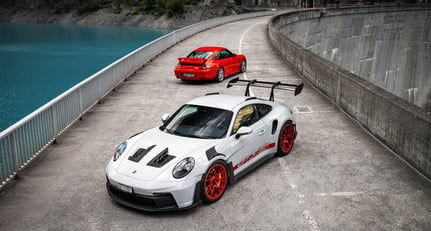This year is a significant one for anniversaries. In 2023, Classic Driver turns 25, while it also marks 75 years since Porsche was founded in Stuttgart. Porsche’s most iconic product — the 911 — was introduced 15 years after the company’s inception, which in human years would make it ready for retirement in the South of France. However, even after 11 generations, it remains the blueprint for an exhilarating sports car, despite the engine being "in the wrong place.”
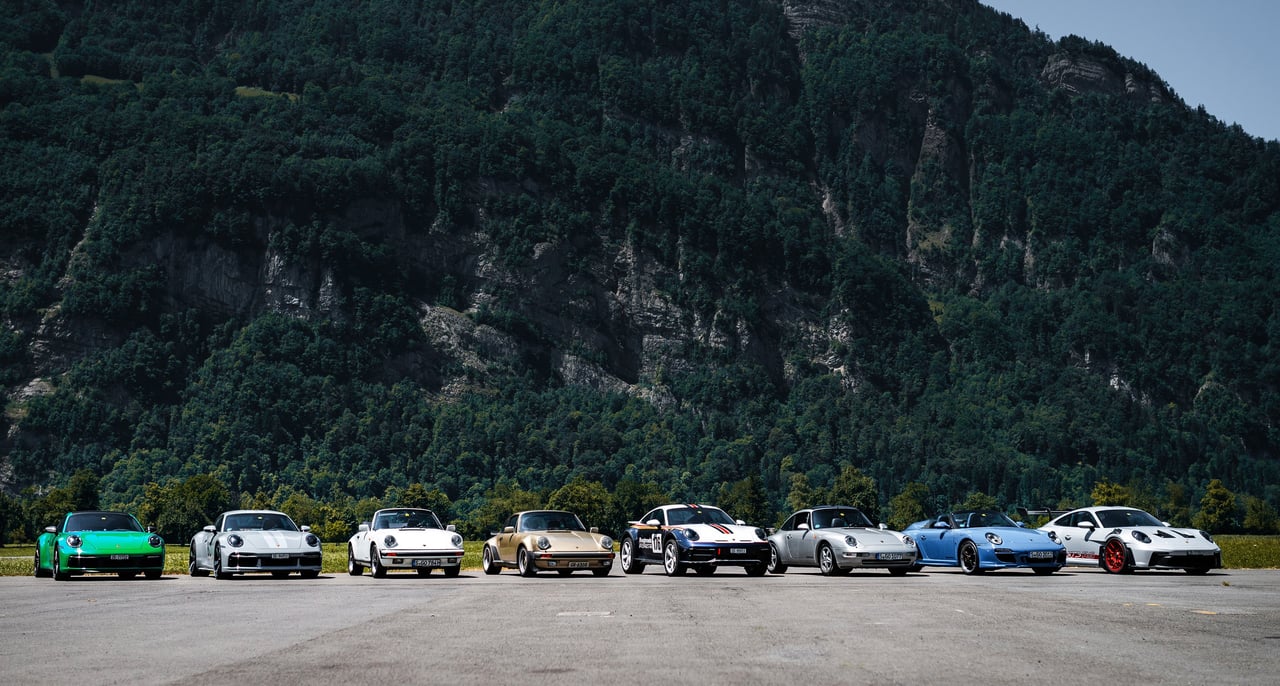
As the only member of the Classic Driver team currently daily driving a Porsche 911 (a 996 Carrera 2), I was excited to rediscover the various iterations of this iconic model. In fact, I haven’t driven the full 911 lineup since 2018, when the 1 millionth car was produced. Coincidentally, I would be sharing the road trip with overall 24hrs of Le Mans winner Neel Jani, from whom I hoped to glean some driving tips and improve my skills along the way.

So, on one Thursday afternoon, we departed from the Grand Resort Bad Ragaz in a stylish convoy of cars, old and new, adorned with birthday stickers and filled with the odd bit of paper confetti. Our first leg was to be enjoyed in the 911 Sport Classic, a car perfectly blends past and present. Essentially a 911 Turbo with a manual gearbox, the Sport Classic is bursting with 1965-inspired styling elements inside and out.

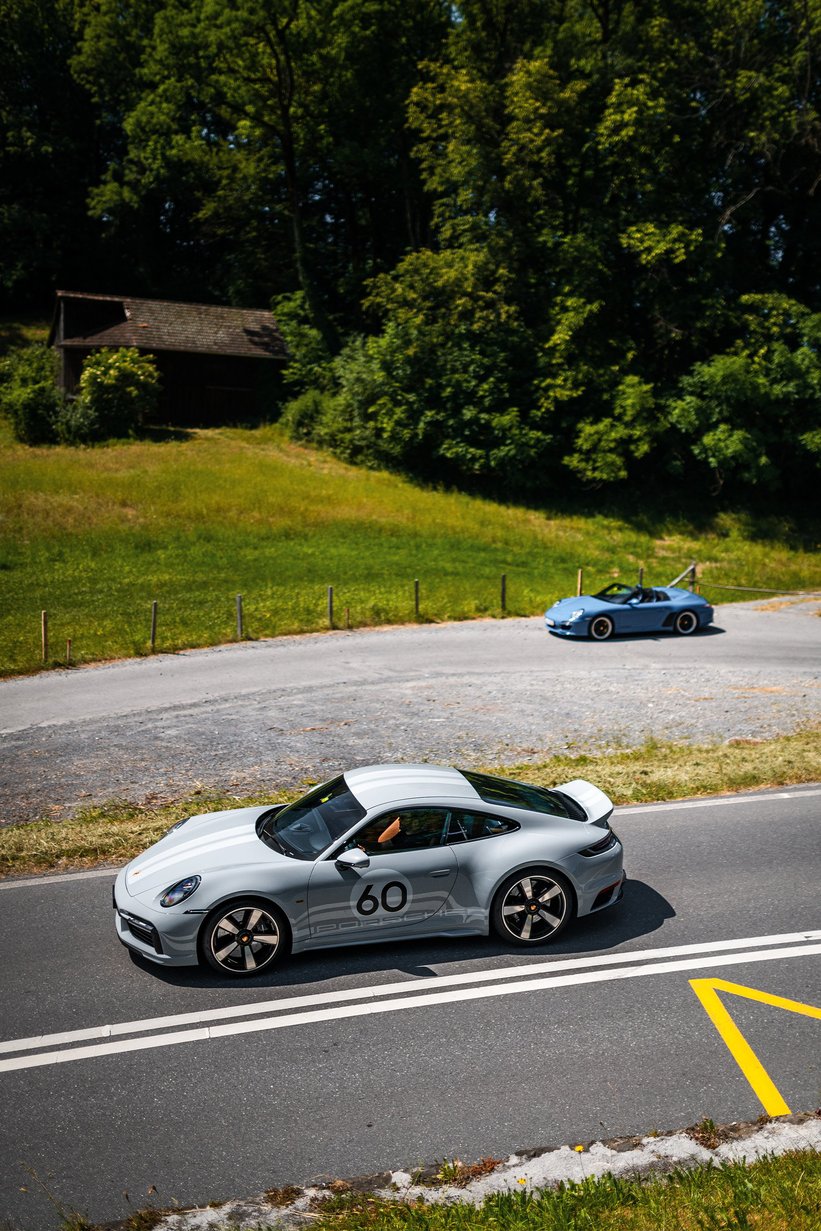
It can be quiet and comfortable like a Turbo, but also exhilaratingly fast, devouring autobahns and mountain passes alike with its 543 horsepower and 600 Nm of torque. Only 1,250 examples of this limited edition rocket were built, and its cabin filled with wooden trim, tan leather, and pepita-patterned fabric upholstery make it just a fantastic place to sit.

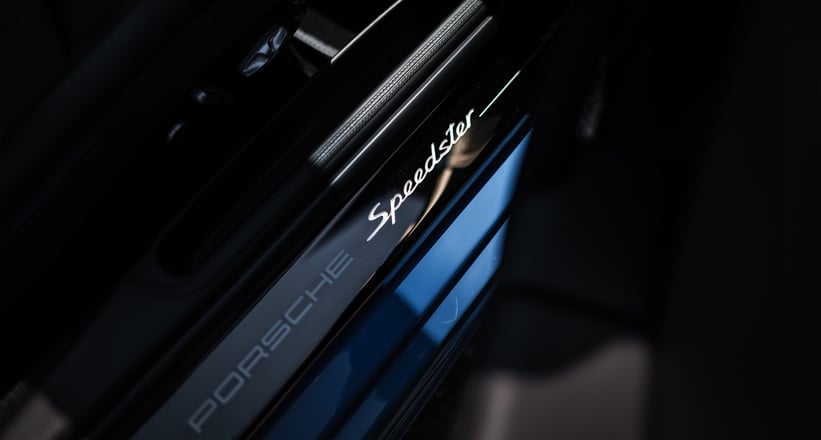
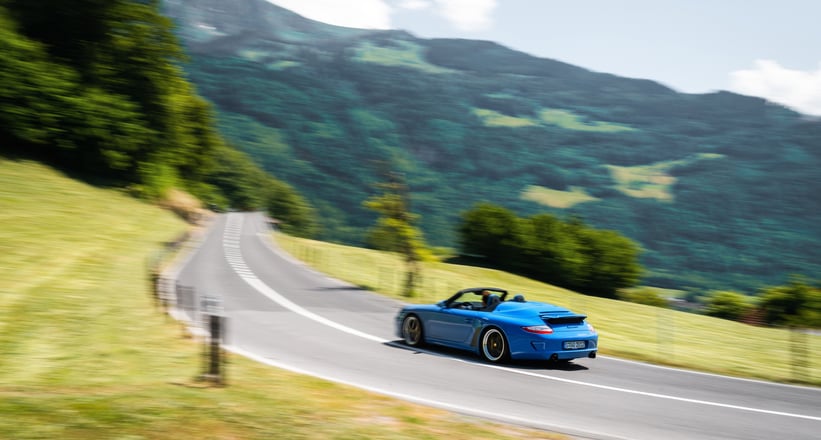
After a quick stop, we switched to another limited edition gem: a "Pure Blue" 997 Speedster, number 0 of 356 cars produced. Its double bubble hump-like roof cover and two-tone Fuchs rims make it visually striking. However, it's a different beast from the 992 Sport Classic. The naturally aspirated 3.8-litre engine with 408 horsepower lends itself to top-down driving pleasure, but it feels more suited to cruising than attacking corners. After a few spirited attempts, we realised that the 997 Speedster, weighing 1615 kg with PDK, felt heavy and lacked torsional rigidity. It’s undoubtedly an exciting car as a collector's item, but not quite as razor-sharp as expected.
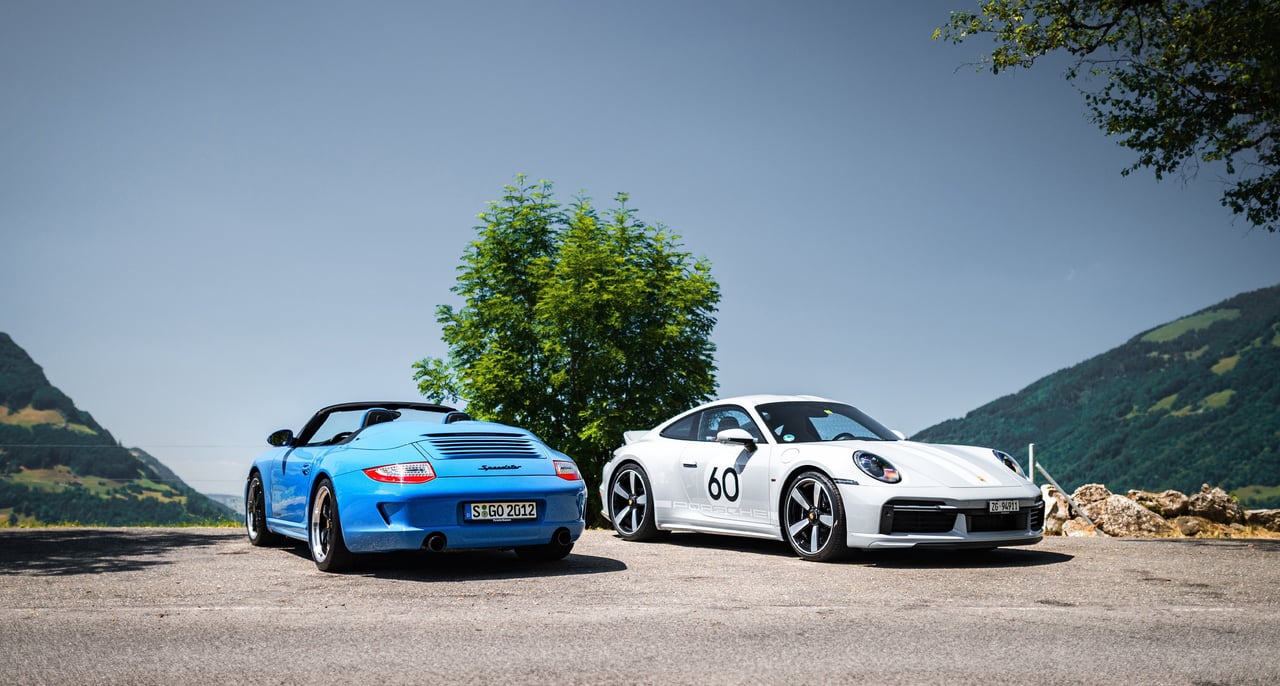
The day concluded at the Guarda Val hotel near Lenzerheide, a genius boutique hotel that installed itself into what used to be a small village. The rooms, restaurants, and bar are located in separate buildings, including houses, farmhouses, and barns. Waking up to the sounds of cowbells, mooing, and goats was the perfect Swiss alarm clock.

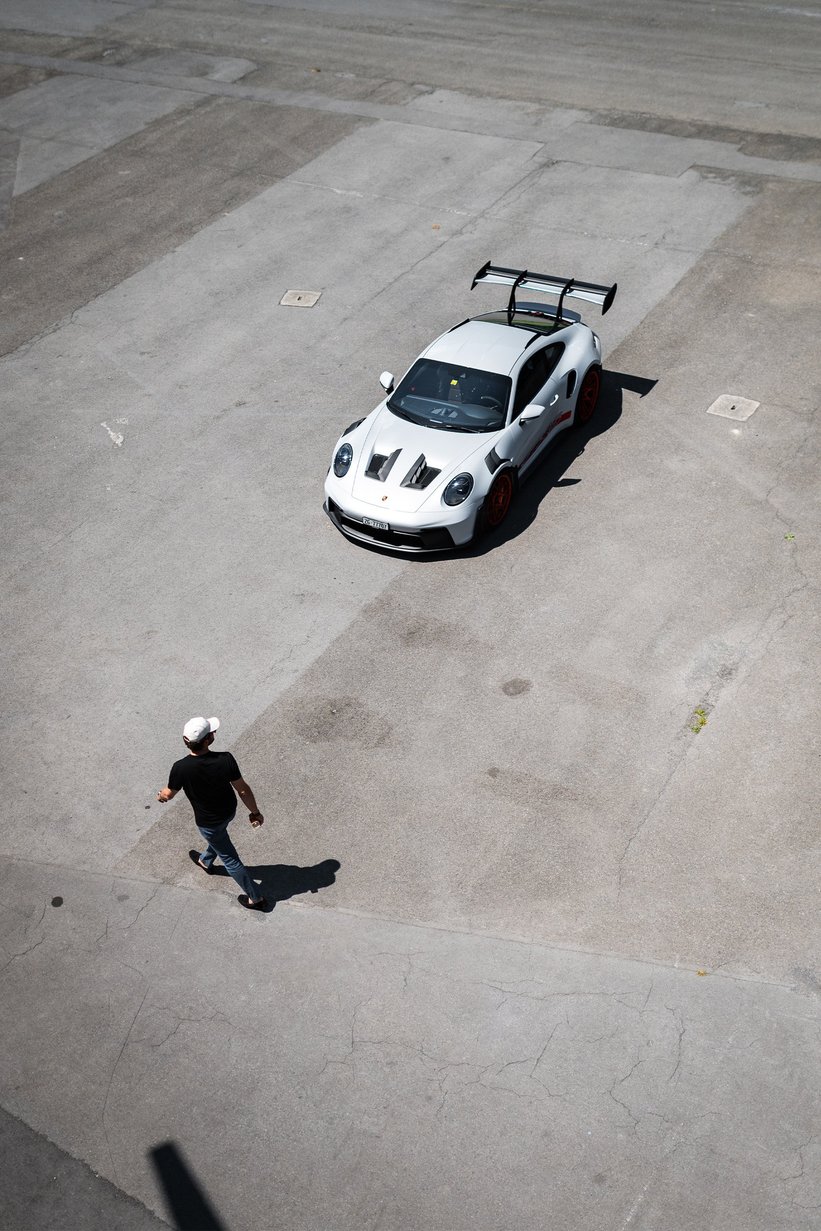
The next morning, we hit the road again, this time in the "car of the moment": the recently launched 992 GT3 RS. Neel felt right at home, and when the road opened up, he unleashed the 525-horsepower screamer engine, reaching maximum torque at 9000 rpm. The acceleration (0 to 100 km/h in 3.2 seconds), grip (even in drizzling conditions on Michelin Pilot Sport Cup 2 tires), and deceleration were all astonishing. In Neel's hands, it became the ultimate track weapon.
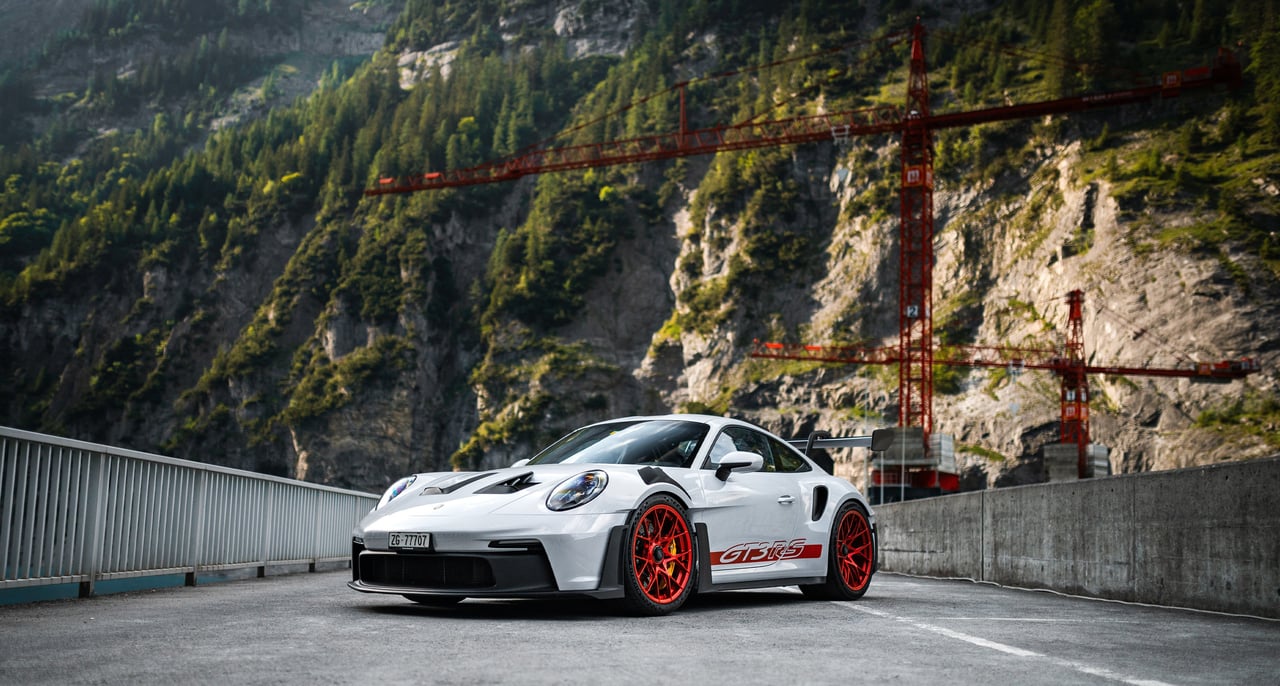
However, when it was my turn to take the wheel, I quickly realised I was out of my depth. The GT3 RS boasts active aero, active damping, active rear-wheel steering, active engine mounts, and other engineering marvels designed to shave milliseconds off lap times. All very impressive, but for an amateur driver like myself, it was overwhelming. The car was too fast and powerful to truly enjoy on public roads. Pushing it to its limits would result in a lifetime jail sentence before the next braking point. While many believe that more power, downforce, and stiffness always make a car better, the reality is that in 99.9% of situations, such extreme features are unnecessary. If you want to have fun while driving without holding on for dear life or risking your driver's license, you don't need them.


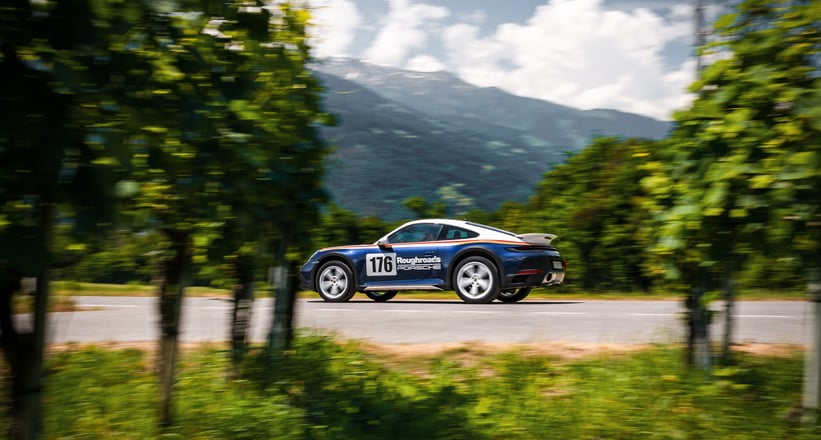
Fun, however, was something the next two cars we drove excelled at. In fact, the 911 Dakar was built for it. The idea of an off-road 911 may seem slightly preposterous, but it felt as surefooted and planted as any Porsche would, despite the raised ride. The off-road tires squealed as Neel manoeuvred the car through tight hairpin turns, with the Dakar's distinct and pleasant baritone engine note adding to the thrill. There’s also something wonderful about being in a fast car that leans and dives like this one does - I’m much more at ease with this kind of “rally style” set up, as it gives plenty of warning before something seriously dangerous happens while still giving you the chance to let loose.
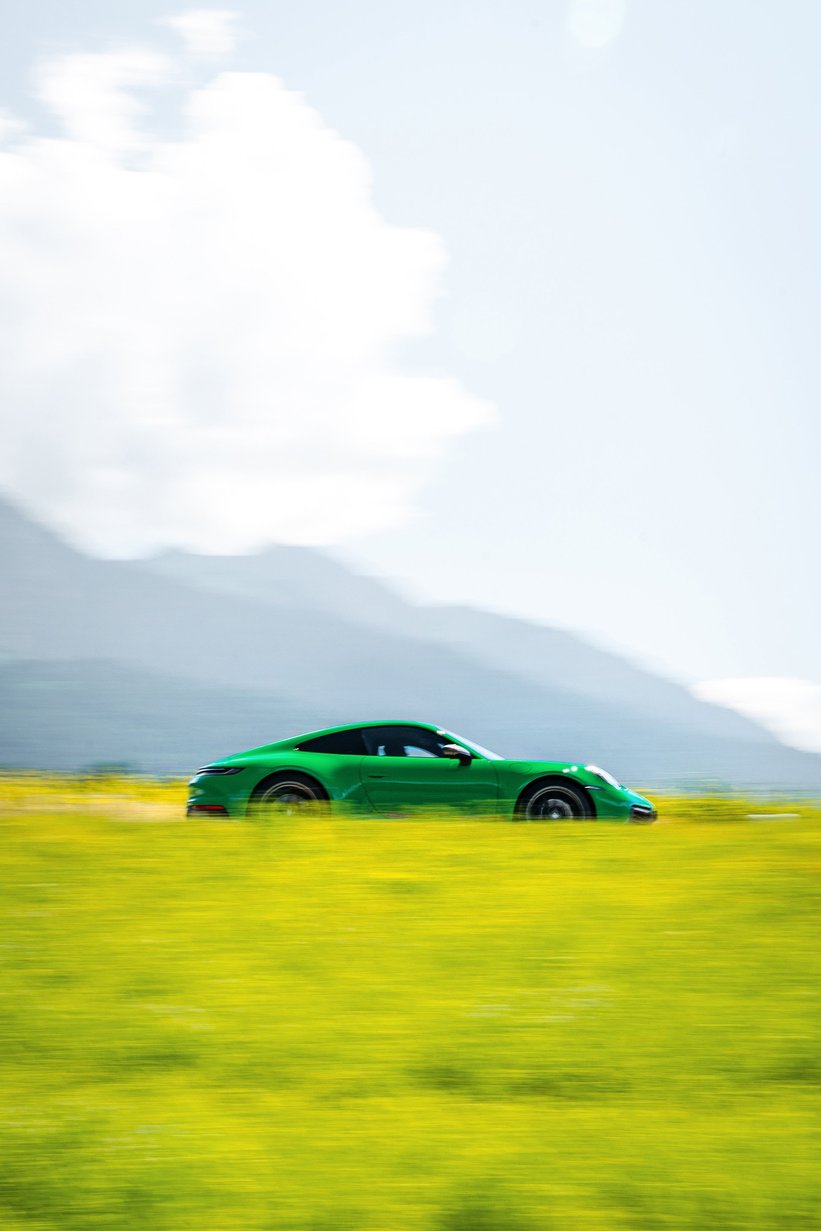
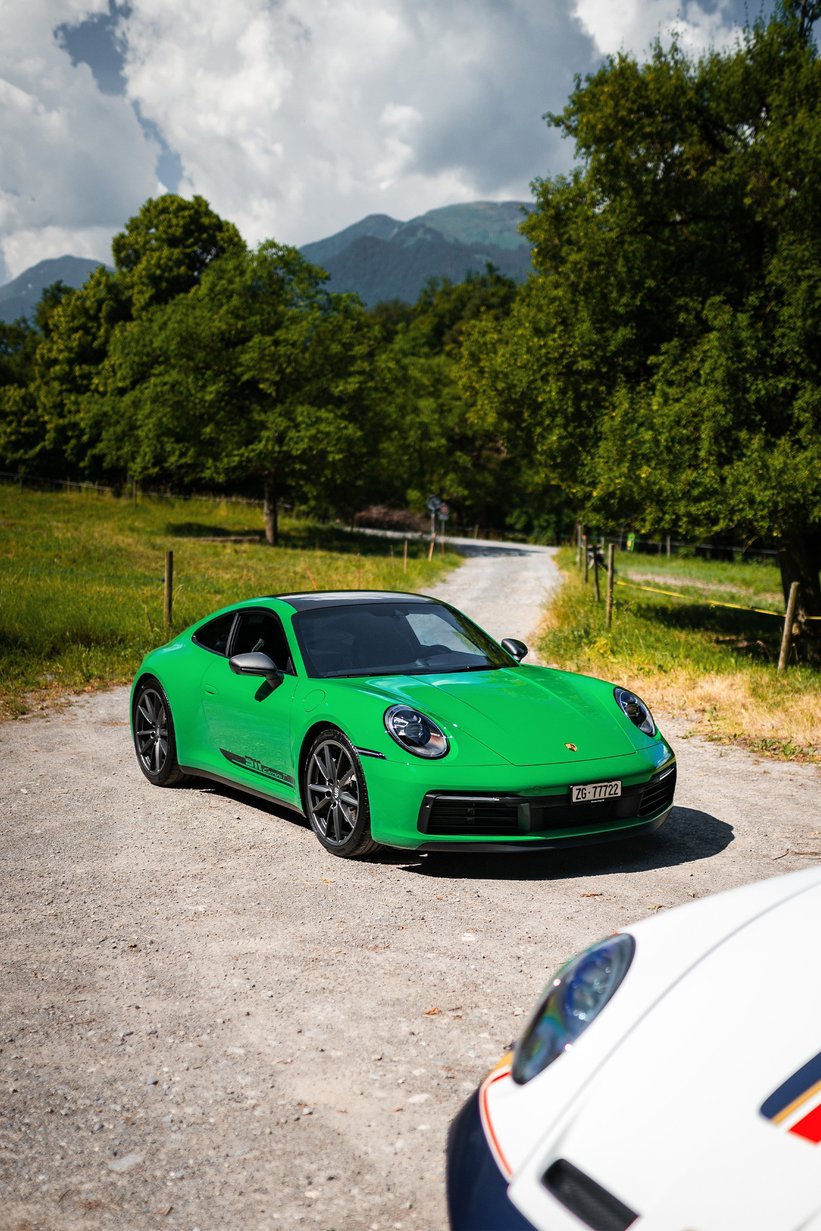
The 911 T we drove next, a slightly more hardcore version of the basic 992 Carrera, also excelled in the fun department. Lighter and more focused, it’s a car that anyone could enjoy in the real world. The autoblip function, which matches revs during downshifts with the manual gearbox, was just sublime and made me feel like Neel Jani or Jörg Bergmeister, who also accompanied us on the trip.

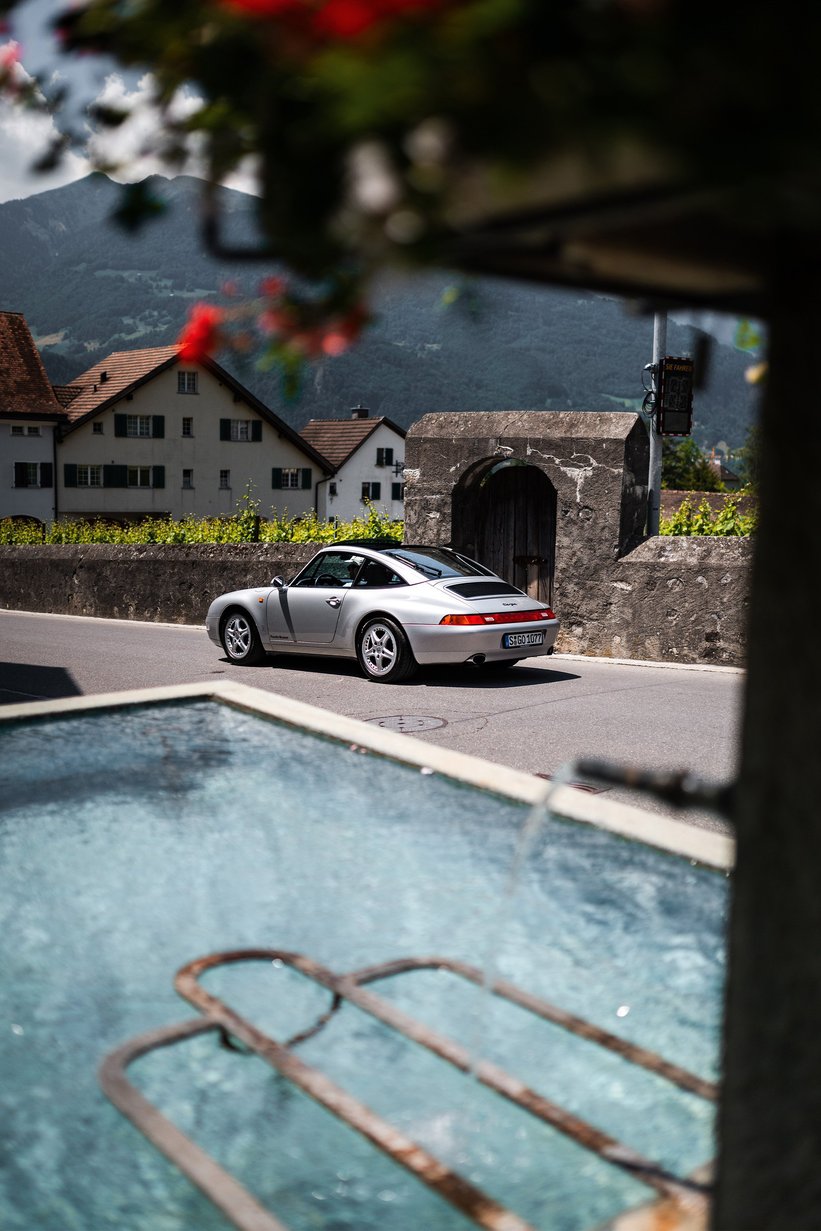
Before our return to Bad Ragaz, Neel and I parted ways, leaving me to spend the rest of the day alone, starting with the 993 Targa equipped with a Tiptronic gearbox. It was probably the slowest car in the lineup, with a 0-100 km/h time of 5.4 seconds. However, I discovered that it held its own in the twisties. The gearbox shifted up and down reasonably quickly, but the gearing was less than ideal. The trick I found was to keep it in second gear and rev the 3.6-litre air-cooled flat six to its limits, only then did the 993 reveal its gazelle-like agility.
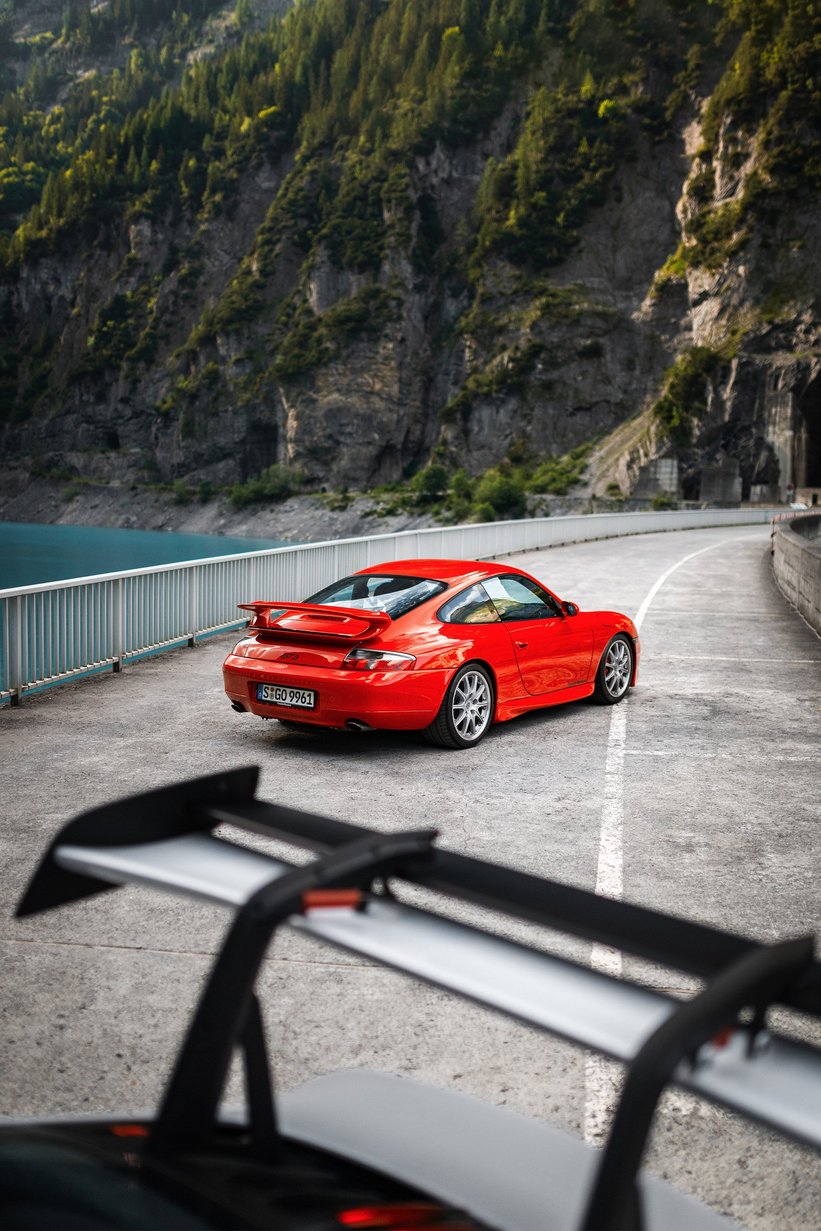

However, the true highlight of the trip was getting behind the wheel of the star of the Porsche Museum cars lineup: the 996 GT3. This car enjoys a cult-like status among Porsche enthusiasts, and for good reason. It's small, narrow, pointy, and grippy—a perfect blend of speed and usability. Its "Metzger" 3.6-litre, 360-horsepower engine, capable of screaming up to 8000 rpm, delivers power and torque progressively.
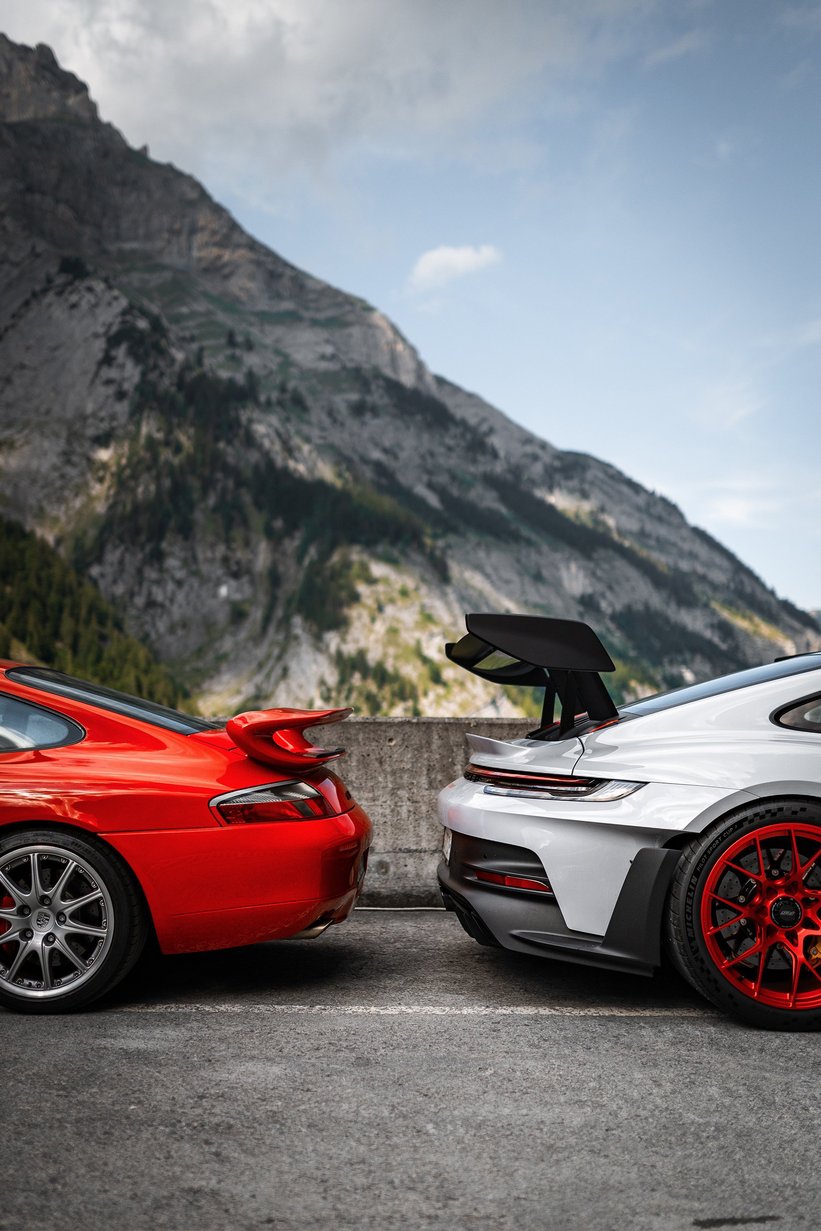

It may have less powerful than the 992, but it’s more accessible. Driving it feels like having a heated conversation with a good debate partner rather than engaging in a fistfight with a gorilla. The experience is just magic: move your wrists ever so slightly and it turns in. Hold it on the power in the corner and it just grips and grips. Floor it at the first sight of the exit and it will reward you with that fantastic howl and shoot towards the horizon.
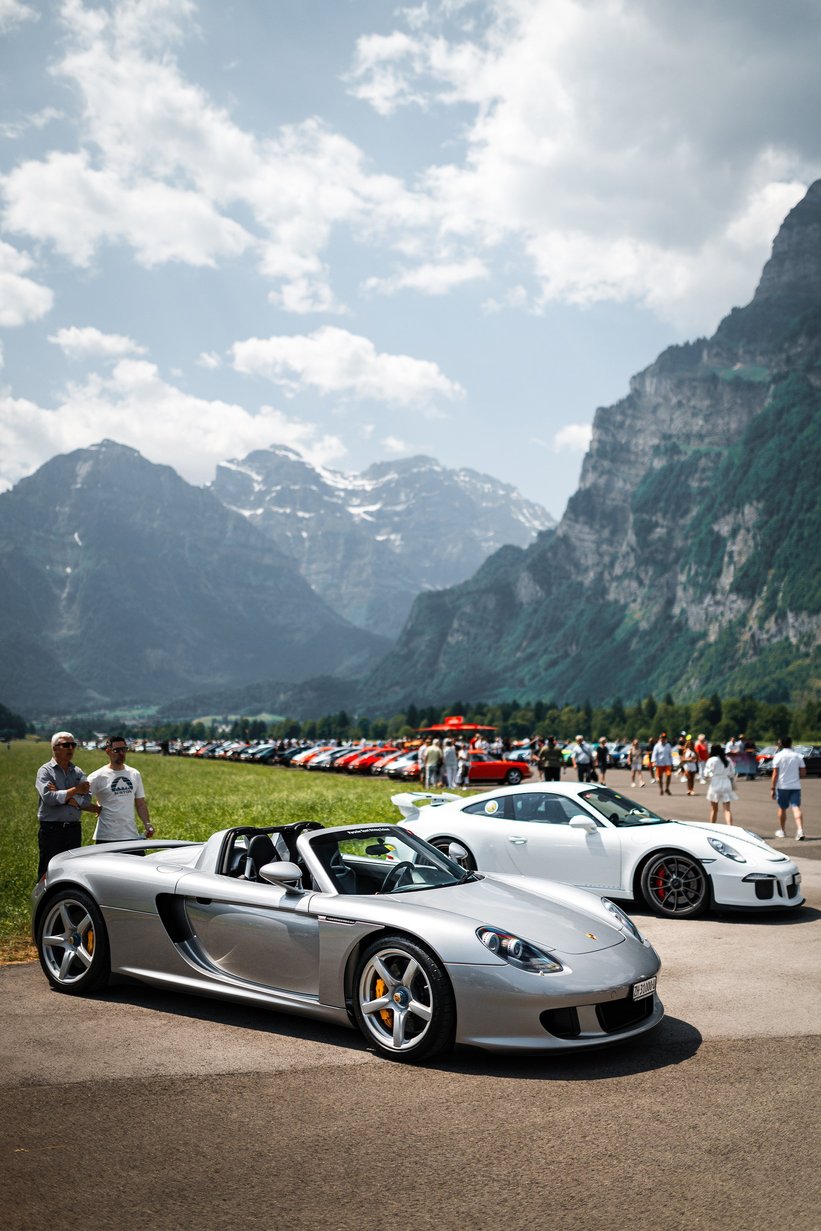

Finally, we arrived at Mollis airfield, where the Porsche Festival was in full swing. Our cars joined the Porsche stand, and we became immersed in the bustling crowd. Over 1200 Porsche 911s had descended upon this small town, creating an unimaginable spectacle of people and special cars. Prototype Porsches like the Mission R, Vision Gran Turismo, and Vision 357 immediately caught our attention, as did racing cars straight from Le Mans, such as the 963 and the menacing 919. Sportec exhibited some mean GT3 Cup cars and racing 993 RS conversions, while a Porsche tent showcased tequipment accessories, Porsche Design watches, and a special festival merchandise collaboration with Zürich-based designer and it-girl Lamarel.
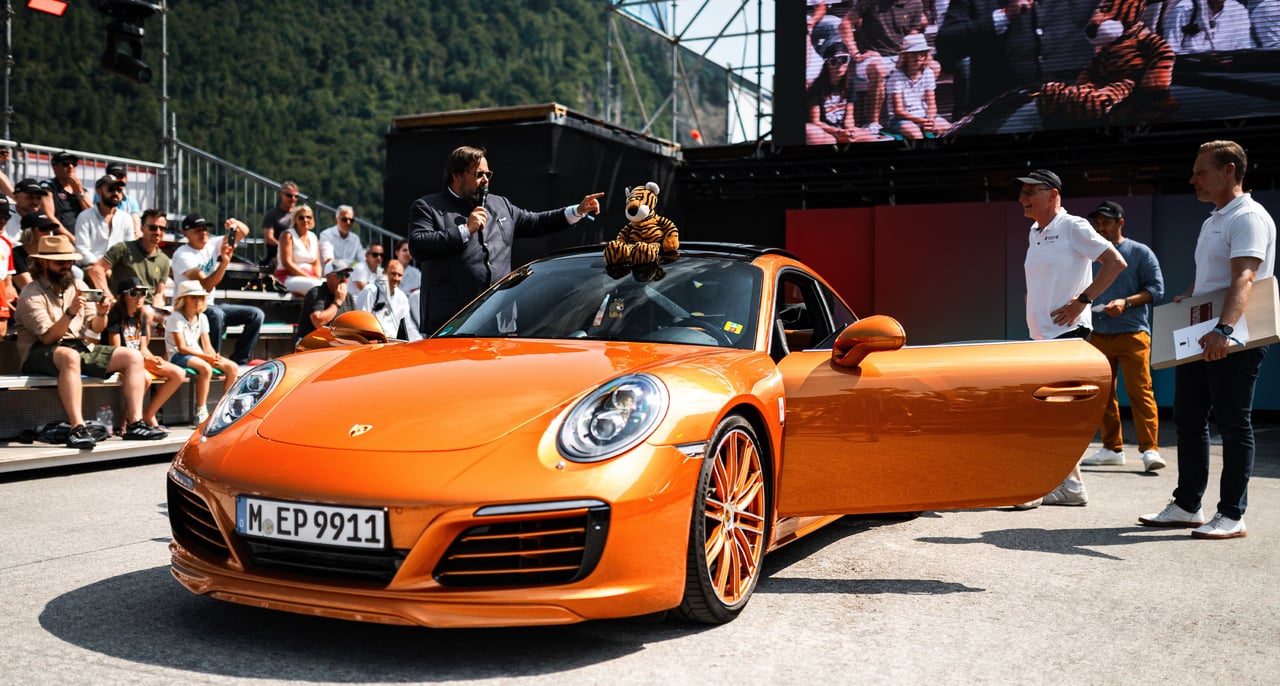
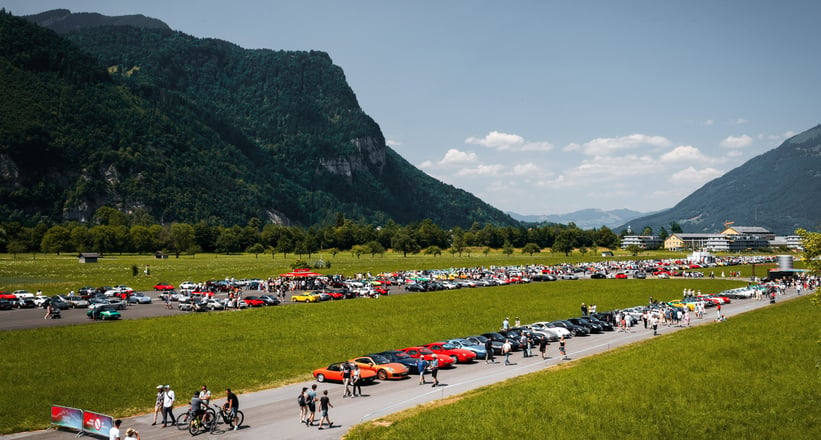
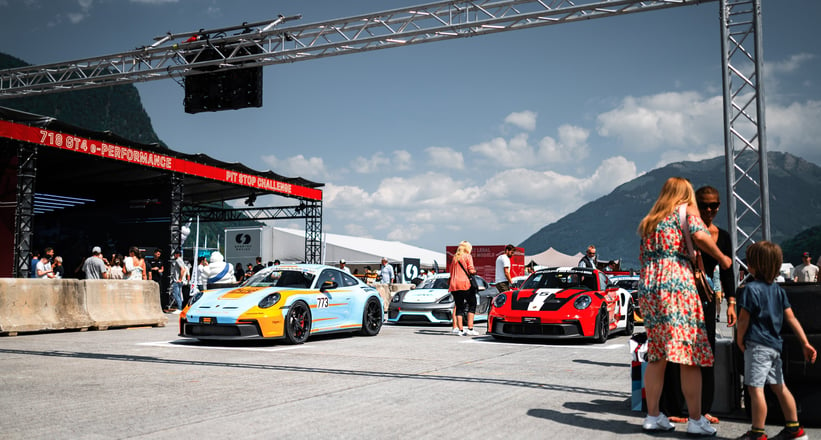
Right at the centre of the event were the grandstands and a stage, where I bumped into our CEO J.P Rathgen, who was co-hosting the event and presiding over the concours d'elegance jury. The winner of the concours was a stunning gold-coloured 997 Turbo "China Edition." Past the stage and some wildly modified Cayennes — including one with back windows that slid out to form a bar and a fondue set in the boot — lay the runway. It was filled with every imaginable generation and model derivative of the 911: the 2.7 RS Carrera, 964 RSR, 911 SC Safari, and multiple 964 Speedsters. Other models made appearances, such as the 918 Spyder (now 10 years old) and two Carrera GTs. The most breathtaking sight, however, was the two massive rows of various GT3s, including my personal unicorn, the 4.0 997 GT3 RS.

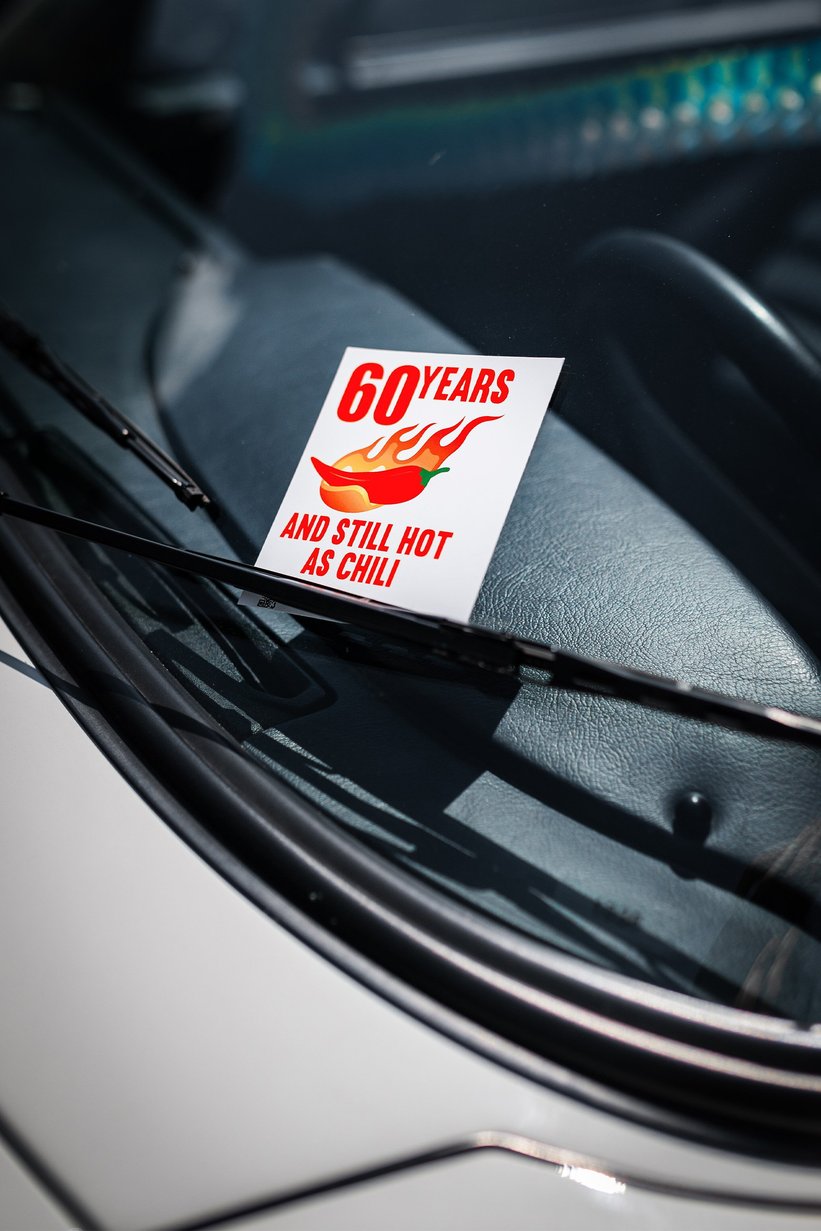
As the sun set over the valley and neighbouring peaks, and the crowd slowly dispersed, I made my way to the train station, reflecting on the past two and a half days in this Swiss paradise. Clearly the internal combustion engine and the passion for driving purely for the sake of it are far from being relics of the past. Porsche's commitment to keeping that spirit alive, from developing synthetic fuels to organising gatherings like this one, is indeed a noble enterprise. As my train to Zürich departed, I thought to myself, "Many happy returns, Porsche. Many happy returns!"
Photos by Andrea Klainguti
